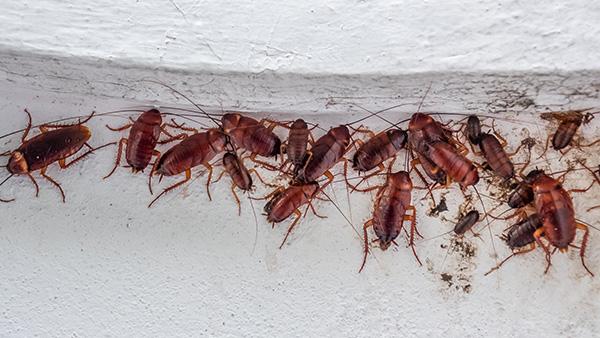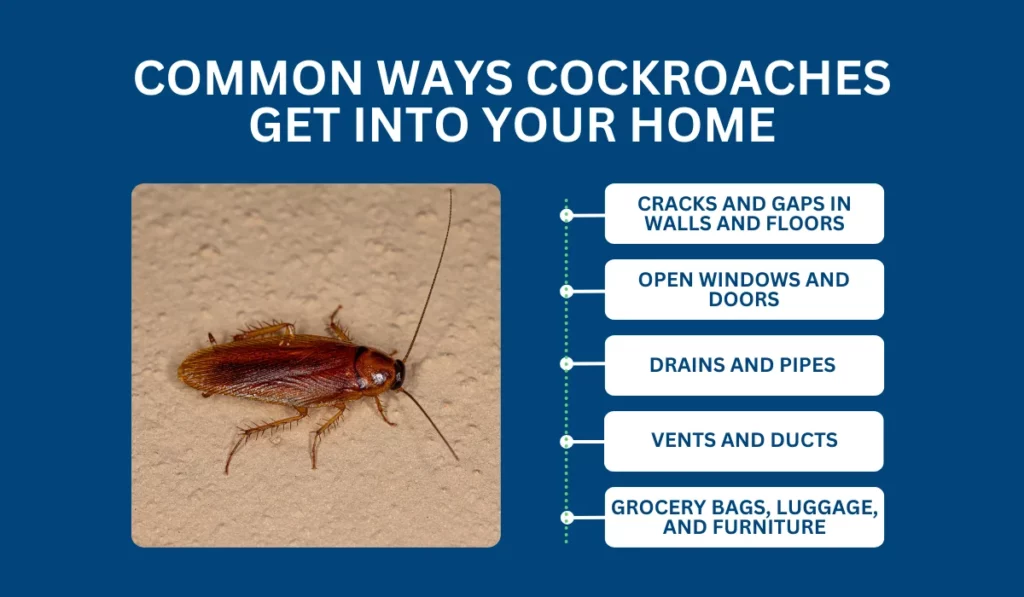Cockroach Treatments in Florida
Exterminator Services for Fort Lauderdale and Plantation
Florida’s subtropical climate—mild winters, year-round warmth, and high humidity—remains attractive for both residents and visitors, but it likewise creates an ideal habitat for cockroaches. These resourceful pests slip into kitchens, bathrooms, or basement corners wherever they can find moisture and food. In Fort Lauderdale, along with neighboring Plantation, cockroach sightings can progress from a minor annoyance to a major infestation if early signals—such as small droppings or roaches scurrying at night—go unheeded. This service page examines how roaches thrive in Florida, how to identify an incipient infestation, and why a professional cockroach exterminator for cockroach treatments is indispensable for maintaining a hygienic home or business. By confronting the problem early, whether upon discovering droppings behind appliances or encountering roaches fleeing when lights switch on, you save yourself deeper contamination, occupant anxiety, and lengthier cleanup processes.
Why Cockroaches Flourish in Florida

- Mild Winter Temperatures
In cooler states, extended freezing conditions can curb roach populations or slow their breeding for months. Florida’s winter rarely plunges to sustained freezing levels, allowing cockroaches to remain active throughout the entire year. Indoors, air conditioning or heating fosters consistent warmth—perfect for roaches to multiply quickly unless occupant vigilance or professional intervention steps in. - High Humidity and Rainfall
Many cockroach species need frequent moisture—leaky pipes, condensation, or damp corners. Florida’s moisture-rich air and periodic downpours maintain the humid environment roaches favor. Kitchens, bathrooms, or even basements and garages can gather enough water to sustain roach nests if occupant or caretaker housekeeping overlooks minor leaks or daily spills. - Minimal Seasonal Dormancy
In northern areas, roaches face partial dormancy or population dips under prolonged cold. In Fort Lauderdale and Plantation, mild winters impose no such forced break, so even a few roaches introduced via occupant belongings or secondhand items can expand into entire colonies unless occupant or staff notice early droppings or other clues. - Easy Access to Food
Roaches consume virtually any organic matter—traces of leftover food, unsealed cereals, or garbage bins without tight lids. A busy occupant household might leave nightly scraps or open pet-food bowls, unknowingly feeding roaches. Because mild Florida winters seldom alter occupant habits drastically, roaches remain well-fed year-round. - Frequent Occupant and Goods Movement
Fort Lauderdale sees consistent tourism, occupant transitions, or short-term rentals. Roaches can ride in shipping boxes, used furniture, or produce crates, settling unnoticed behind fridges or inside hidden wall spaces. Without occupant-based scanning or building upkeep, roaches breed quietly until occupant sightings become unavoidable.
Telltale Signs of a Cockroach Infestation
- Droppings
Different roach species leave distinct droppings: pepper-like specks or small smears for smaller species (like German roaches) and larger, capsule-like pellets for bigger species (such as American roaches). Finding fresh droppings near damp corners—behind sinks or under appliances—strongly suggests active roach movement. - Egg Casings (Oothecae)
Roaches lay brownish, ridged egg capsules containing multiple eggs. Certain species drop them in hidden corners, while others carry them until hatching. Spotting these casings stuck to walls or floors near baseboards or in cupboards signifies active breeding. - Nighttime Sightings
Roaches generally feed at night. If occupant or staff flicks lights on late and sees roaches darting away, an infestation likely stands at a moderate or advanced stage. Observing them in daylight often signals overcrowding forced some out of typical hidden zones. - Musty or Oily Odor
With bigger populations or long-term colonies, roaches produce a distinctive musty smell in enclosed areas such as pantries or beneath sinks. Occupants detecting unexplained odors might investigate corners, searching for droppings or egg capsules to confirm roach presence. - Smear Marks
In high-humidity spots, roaches can leave smear marks or dark streaks on walls where they frequently traverse. Observing these near sinks, drains, or bathrooms underscores heavy roach traffic in those locations, necessitating occupant or professional attention.
Why Prompt Cockroach Treatments Are Vital
- Health and Sanitation Risks
Roaches can transport bacteria onto kitchen surfaces, utensils, or stored foods, posing occupant health concerns if left to multiply. Their droppings also trigger allergies in some individuals. Eliminating them quickly sustains occupant comfort and property cleanliness. - Rapid Colony Growth
Certain roach species, notably German roaches, multiply rapidly. A handful overlooked can become dozens or hundreds behind walls or under cabinets in mere weeks. Detecting droppings or fleeting sightings early ensures occupant or caretaker can hamper expansions effectively. - Property Image or Brand Reputation
For short-term rental hosts, restaurants, or hotels in Fort Lauderdale, occupant sightings of roaches can prompt negative reviews or occupant wariness. Swift occupant or professional solutions preserve occupant trust and brand quality. Even in private residences, roach invasions lead to occupant embarrassment or daily frustration. - Daily Occupant Stress
Sharing a kitchen or bathroom with roaches unsettles occupant peace. Families might dread discovering more droppings each morning or fear unexpected roach scurries at night. Comprehensive eradication rescues occupant morale, letting families or employees refocus on typical routines.

Why a Professional Exterminator Is Recommended
- Complete Property Analysis
A cockroach exterminator surveys kitchens, bathrooms, basements, or yard perimeters, finding droppings, egg capsules, or typical roach highways near water sources. Determining if occupant deals with German, American, or smoky-brown roaches shapes the correct approach—like where to place traps or baits for maximum coverage. - Strategic Baiting and Trapping
Over-the-counter sprays risk scattering roaches deeper behind walls. Professionals deploy gel baits or insect growth regulators along roach thoroughfares—like baseboards or under sinks—killing entire nests by slowly poisoning feeding individuals who spread toxins to nest mates. This thorough method eliminates hidden colonies occupant might not see. - Exclusion and Sanitation Guidance
Killing current roaches alone fails if occupant or caretaker solutions don’t block new infiltration or remove easy meals. Sealing foundation cracks, fixing leaks, or wiping up leftover scraps denies roaches the resources they need. Professionals typically advise occupant housekeeping tweaks—like discarding clutter or storing cereals in sealed bins—for stable results. - Reduced Chemical Overexposure
Experts target insecticides with precision, focusing them in cracks or corners roaches use, limiting occupant or pet contact. Occupants usually only need minimal downtime—waiting until dryness or recommended re-entry intervals—while roaches crossing these treated zones face lethal contact. - Follow-Up Verification
Because roach egg capsules might hatch weeks after occupant or staff solutions, occupant re-checks or professional visits confirm no second wave emerges. If occupant sightings persist—like fresh droppings or new egg casings—targeted re-treatments finalize occupant relief, ensuring no hidden clusters remain behind walls.
Methods for Cockroach Extermination
- Inspection and Mapping
The exterminator notes droppings around sinks or behind refrigerators, verifying species. Observing whether droppings cluster near water lines or in damp cabinets shapes trap or bait station placements. Documenting egg capsules or discovered nests clarifies infestation scope. - Gel Baits and Bait Stations
Gel baits are especially effective for species like German roaches. Roaches ingest poison and return it to the colony, distributing lethal doses nest-wide. Bait stations near damp corners or under sinks handle repeated roach traffic, ensuring multiple roaches feed on the toxins. - Insect Growth Regulators (IGRs)
IGRs hamper roach breeding by preventing nymphs from maturing into reproducing adults. Deployed near baseboards, water sources, or behind stoves, these regulators cut future roach generations. Coupled with adulticides, occupant sees both immediate kills and inhibited re-emergence. - Residual Sprays
Some infestations warrant directed sprays along wall-floor junctions or cracks roaches frequent. Occupants typically leave areas briefly until dryness. These residual insecticides remain active for days or weeks, handling newly hatched roaches traveling these routes. - Dust for Hidden Areas
In wall voids or behind permanent fixtures, applying insecticidal dust kills roaches crossing these hidden zones. Roaches grooming themselves ingest dust, leading to nest-wide lethality. This dust complements baits or sprays for thorough coverage occupant alone might struggle to achieve.
Serving Fort Lauderdale and Plantation
Fort Lauderdale: A vibrant coastal city with numerous occupant transitions—tourists, short-term rentals, or shipping crates can all inadvertently bring roaches if occupant or caretaker routines slip. Quick occupant scanning for droppings behind appliances or near water lines plus synergy with professional extermination staves off roach expansions across older or multi-floor buildings.
Plantation: A suburban area bridging older homes and new developments. Roaches might infiltrate through foundation cracks or leftover scraps if occupant dryness or housekeeping measures fall short. Occupant synergy—like discarding daily food scraps and regularly wiping counters—plus specialized solutions ensure roaches cannot saturate corners or behind walls.

Why Our Cockroach Treatments Excel
- Florida-Specific Tactics
Because southwestern Florida seldom experiences freeze spells that hamper roach breeding, occupant synergy—like dryness, storing cereals in sealed containers—and advanced baits or insect growth regulators effectively corner roaches. This synergy addresses roach expansions at each life stage. - Precision and Low Disruption
We target roach hideouts precisely—under sinks, behind stoves—so occupant or pet chemical exposure remains minimal. Occupants typically remain onsite, waiting for dryness or recommended intervals if needed, quickly resuming normal routines while roaches face lethal coverage. - Preventive Measures
Eliminating an existing roach colony solves immediate problems, but occupant housekeeping—like sealing cracks or promptly discarding trash—prevents re-entry or new populations from taking root. This occupant plus professional approach cements long-term results. - Follow-Up Confidence
Because roach egg casings may hatch weeks later, occupant-based or scheduled re-checks confirm no second wave emerges. If occupant sightings reoccur, additional spot or perimeter treatments finalize occupant peace, ensuring no overlooked pockets remain behind baseboards or in seldom-used areas.
Next Steps
Encountering pepper-like droppings in kitchen drawers, seeing roaches sprint when lights flick on, or detecting musty odors in damp cupboards? Contact us to learn more or schedule your service. Our cockroach treatments in Fort Lauderdale and Plantation thoroughly tackle roach populations from egg to adult, freeing occupant living or working spaces from daily contamination or scurrying pests. Consulting a professional cockroach exterminator spares occupant guesswork, guaranteeing hidden roaches behind walls, under floors, or in seldom-accessed corners also face lethal solutions.
Swift occupant action—like scanning behind stoves for droppings, sealing leftover cereals, or verifying second hand items for roaches—prevents minor issues from exploding into major infestations overshadowing occupant well-being. Through occupant housekeeping plus advanced roach control methods—like insect growth regulators or gel baits—roaches meet lethal conditions at each step, ensuring your Florida home or business remains comfortable and roach-free, letting families or staff focus on Florida’s sunshine and city life without the dread of hidden pests lurking in the dark.
Maintaining a Roach-Free Property
- Proper Food Storage: Keep cereals, grains, or pet foods in sealed plastic or metal bins. Immediately wipe counters of spills or crumbs. Roaches rely on accessible scraps to feed their colonies.
- Eliminate Water Sources: Fix dripping faucets, empty condensation trays, and promptly wipe any pooling water. Roaches need moisture—removing it hampers their survival.
- Frequent Trash Disposal: Seal waste in lidded bins, removing it regularly. A wide-open garbage can draws roaches from yard edges or other units indoors.
- Declutter and Seal Gaps: Reducing cardboard piles or stored paper denies roaches harborage. Apply caulk or weatherstripping around door frames, windows, or foundation cracks to block infiltration routes.
- Routine Checks: Investigate behind refrigerators or under sinks monthly for fresh droppings or egg casings. Early occupant detection halts expansions before occupant stress escalates.
By integrating occupant vigilance—like dryness measures, daily cleaning, and sealing openings—and specialized cockroach extermination solutions, southwestern Florida property owners deter roaches from overshadowing occupant comfort. Even though Florida’s mild winter fosters near-constant roach activity, occupant synergy plus carefully positioned baits or insect growth regulators hamper roaches at every life stage, ensuring families or businesses in Fort Lauderdale and Plantation remain free of scuttling invaders overshadowing the region’s sun and vibrant cityscape.
